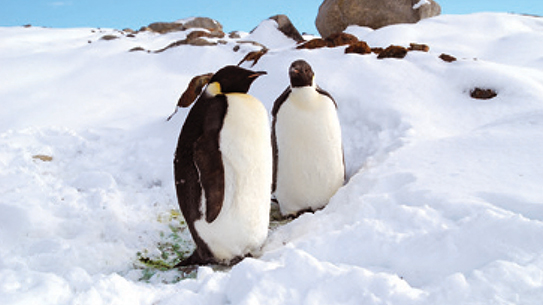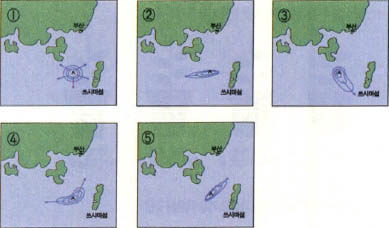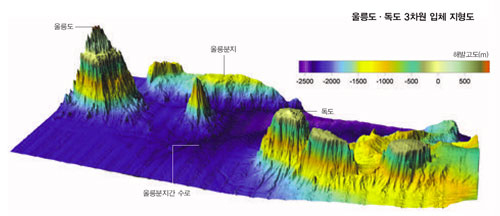일본 다마가와 대학의 조니온 오사카씨와 같은 화산학자가 하는 일이란 화산이 언제 폭발할는지를 미리 예측하는 것이다.
화산은 흔히 생명력을 잃은 사화산처럼 보인다. 일단 폭발과정이 끝나면 분화구에 용암이 집결되어 응고된 상태로 마개를 형성함으로써 다시는 폭발이 없을 것처럼 보이는 것이다. 그러나 이는 그릇된 믿음일 뿐이다. 지구밑 깊은 곳 어디선가에선 지구 자체의 내열로 말미암아 수증기가 생긴다. 그 수증기의 양이 많아지고 압력이 높아지다보면 결국 화산의 마개는 뽑히고 만다.
보편적으로 화산의 분화는 온순하며 그 결과는 비교적 경미한 분화작용에 머문다. 그러나 가끔씩 거대한 폭발이 일어나 수천명의 사람들이 죽기도 한다.
일본에서도 운젠산맥의 후겐화산은 그간 사화산으로 널리 알려져왔다. 후겐화산은 지난 1792년에 마지막으로 폭발하면서 약 1만5천명의 인명피해를 초래했다. 그리고 그 때 이후론 잠잠했었다.
그러나 지난 봄, 지진이 그 산을 뒤흔들면서 약간의 용암이 흘러나왔다. 후겐산 부근의 수천명의 주민들이 소개됐고 그렇지 않아도 스스로 현장을 벗어났다.
그런데 지난 6월3일엔 흘러나오는 용암의 양이 상당함에 따라 35명이 목숨을 잃고 말았다. 그때 오사카씨는 용암의 분출이 더욱 늘어날 뿐 아니라 분화작용도 격렬해지리라고 확신했다.
오사카씨의 생각은 옳았다. 오래지 않아 후겐화산은 엄청난 위력으로 폭발하며 바위와 돌멩이들을 무려 3마일 밖으로 내던졌다.
대체로 화산으로 인한 피해는 '화쇄류'에 의한다. 화쇄류란 고열의 가스와 화산재가 산을 타고 내려오면서 사람들이 대피하기 전에 덮치는 것이다. 약 1백년전에도 마티니크섬의 펠레산이 폭발한 후 화쇄류가 분출돼 토굴감옥 깊은 곳에 갇혀있었던 죄수 한명을 제외하고는 그 섬 수도의 모든 사람들을 한명도 남기지않고 살해해 버렸다.
후겐화산의 폭발과 거의 동시에 무려 6백년간을 '죽어'지내던 필리핀 중부의 피나투보 휴화산도 비슷하게 폭발했다. 이 피나투보 화산의 폭발은 필리핀에서의 중요한 미군기지인 클라크 공군기지의 아주 근접한 곳에서 발생했다. 따라서 그 공군기지는 이전할 수밖에 없었으며 과연 그곳이 다시 활용될는지에 대해서도 의문이 제기되고 있다.
그 폭발에 의한 화산암편들은 15마일 이상을 날아갔는데 화산학자들은 피나투보 화산의 분화작용이 증가하리라고 믿고 있다. 어쩌면 앞으로도 수개월 혹은 수년동안을 계속할는지 모른다.
일본의 화산과 필리핀의 화산사이엔 어떤 연관성이 있을까? 직접적인 것은 없다. 두 화산이 서로 너무 멀리 떨어져 있기 때문이다.
그러나 지구 표면의 가벼운 바위로 구성된 태평양 지판은 그 밑의 보다 무거운 부분위에 '떠' 있어서 아시아나 북아메리카 서부지역의 지판 모서리 부분을 계속해서 갈아문지르고 있다. 이 현상은 지진을 발생시킨다. 뿐만 아니라 일본으로부터 라틴 아메리카에 이르는 태평양 지역 둘레에서 나타나는 분화작용은 원을 그리는 소위 '불의 고리'를 만든다. (약 1백여년전 진화론자 다윈의 둘째아들이 이 불의 고리는 까마득히 먼 옛날에 달이 지구로부터 뜯겨나간 자국이라고 주장한 바 있다. 그러나 매우 극적인 주장임에도 불구하고 그 주장은 완전히 틀린 것이다)
현재 세계 이곳저곳에 산재한 활화산의 수는 37개인데 그중 일본의 후겐화산과 필리핀의 피나투보 화산을 포함한 29개는 바로 이 불의 고리에 위치하고 있다.
물론 일본과 인도네시아는 지구상에서 가장 화산작용이 활발한 지역이지만 서구 역시 나름대로 폭발하기 쉬운 화산들을 갖고 있다. 비록 일본이나 필리핀의 화산과 비교할 때 하찮은 것이라해도 세인트헬렌 화산도 불의 고리가 낳은 작품이다. 기타 멕시코나 중미지역에도 화산들이 존재한다.
현대의 가장 어마어마한 화산폭발은 1815년 인도네시아의 탐보로 화산에서 있었다. 폭발이 봉우리 부분을 완벽하게 날려버려 엄청난 양의 화산재가 대기 성층권으로 보아 올려졌고 거기서 다시 가라앉을 때까지 수년간을 머물렀다. 그 당시 무척이나 아름답던 저녁놀은 바로 그 화산폭발의 부산물이었다.
반면 덜 유쾌한 사실도 있었는데 그 성층권의 먼지가 햇빛의 많은 양을 차단시킴으로써 이례적으로 찬 기온을 만들었던 것이다. 이 사실은 뉴 잉글랜드 지역에서 가장 잘 나타났는데 그곳에선 1816년 한해동안 7, 8월을 포함해 한달도 빠짐없이 눈이 내렸다. 따라서 그곳 사람들은 그해를 '여름이 없었던 해'라고 불렀다. 수백명이 추위에 얼어죽기도 했다.
기원전 1500년엔 그보다 더욱 극악한 화산 폭발이 있어 한참 번성기에 있던 테라섬의 모든 것을 파괴시켜버렸다. 그 폭발은 지중해 크레타섬에 먼지구름을 만들고 화산재를 뿌려 그곳의 문명에 심각한 피해를 초래했다. 또한 높은 파도를 일으켰는데 어쩌면 그것이 노아의 대홍수 신화를 낳게 만들었는지도 모른다. 사람들은 이집트와 소아시아 지역으로 피난을 가야했으며 문명은 거의 파괴되다시피 했다. 그 폭발은 가위 엄청난 것이었다.
The job of a volcanologist, like Jonyon Ousaka at Tamagawa University in Japan, is to try to predict when a volcano will erupt.
A volcano may seem to be dead. After it has finished erupting, lava may collect in the crater and form a plug that will seem to keep the volcano from ever erupting again. This, however, is a matter of false confidence. Somewhere deep in the Earth, water is collecting and being converted into steam by the internal heat of the planet. The steam builds up, the pressure increases, and eventually, the plug blows out.
Usually, the blowout is moderate and the result is a more or less gentle volcanic action. Sometimes however, the blowout is enormous and many thousands of people are killed.
In Japan the Mt. Fugen volcano in the Unzen Mountains was widely considered to be dead. It had last exploded in 1792, killing perhaps 15,000 people. Since then it had been quiet.
This spring, however, earthquakes shook the mountain and there was a small lava flow. Thousands of people living in the vicinity were evacuated or fled on their own.
Then, on June 3, the lava flow became substantial, and about 35 people were killed. Ousaka was quite certain the flow would increase and that volcanic activity would worsen.
He was right. Soon a powerful explosion hurled stones more than three miles.
Most volcanic damage is caused by "pyroclastic flow." This consists of superheated gas and ash rolls down the mountainside and catches people before they can flee. About 100 years ago, a pyroclastic flow down Mt. Pelee in Martinique killed every person in the island's capital, except for a convict being kept in a dungeon far underground.
Almost simultaneously with Mt. Fugen's eruption, the central Philippines volcano Mt. Pinatubo exploded in almost the same way, after having been "dead" for 600 years. The explosion came quite close to Clark Air Base, an important American base in the Philippines. It had to be evacuated and there is some question as to when, if ever, it will be usable again.
Rock fragments from the explosion have fallen 15miles away and volcanologists are convinced that the mountain's activity will increase.
It may even continue for months or years.
Is there any connection between the volcano in Japan and the one in the Philippines? Not directly. They are separated by too great a distance.
However, the large Pacific plate of lighter rock on the Earth's surface that "floats" on the heavier beneath continually grates against the edges of floating plates in Asia and western North America. This gives rise to earthquakes. It also produces the "Ring of Fire" - the circle of volcanic activity around the Pacific from Japan to Latin America. (A little more than a century ago, Darwin's second son suggested this Ring of Fire marked the place where the Moon was torn out of the Earth billions of years ago. But, though this was a dramatic suggestion, it was quite wrong.)
There are at the moment 37 volcanoes active here and there in the world and, of these, 29, includeing the one in Japan and the one in the Philippines, are situated on the Ring of Fire.
Although Japan and Indonesia are the most volcanic regions on Earth, the western hemisphere has its share of these volatile mountains. Mt. St. Helens, a pipsqueak of a volcano compared to those in Japan and the Philippines, is also a product of the Ring of Fire. There are others in Mexico and Central America.
The largest volcanic explosion in modern times occurred in 1815 when Mt Tamboro in Indonesia blew its top so thoroughly that cubic miles of dust were fired into the stratosphere and remained there for several years before settling. Beautiful sunsets were a by product of this eruption.
Less delightful was the fact the stratospheric dust cut off a good deal of the sunshine and produced unusually cold temperatures. This was most noted in New England where there was snow every month of 1816, including July and August. New Englanders called it the 'Year Without a Summer." Hundreds of people froze to death.
In 1500 B.C., an even more ferocious volcanic eruption took place, completely destroying the flourishing island of Thera. It generated clouds of dust and ashes that fell on the island of Crete and seriously damaged its civilization. It created tidal waves that may have given rise to the mythology of the Great Flood. It sent refugees fleeing to Egypt and to Asia Minor and virtually destroyed the civilizations there. It was quite an explosion.
(c)1991, Los Angeles Times Syndicate
이 기사의 내용이 궁금하신가요?
기사 전문을 보시려면500(500원)이 필요합니다.
1991년 09월 과학동아 정보
🎓️ 진로 추천
- 지구과학
- 환경학·환경공학
- 도시·지역·지리학
1991년 09월 과학동아 다른추천기사

















